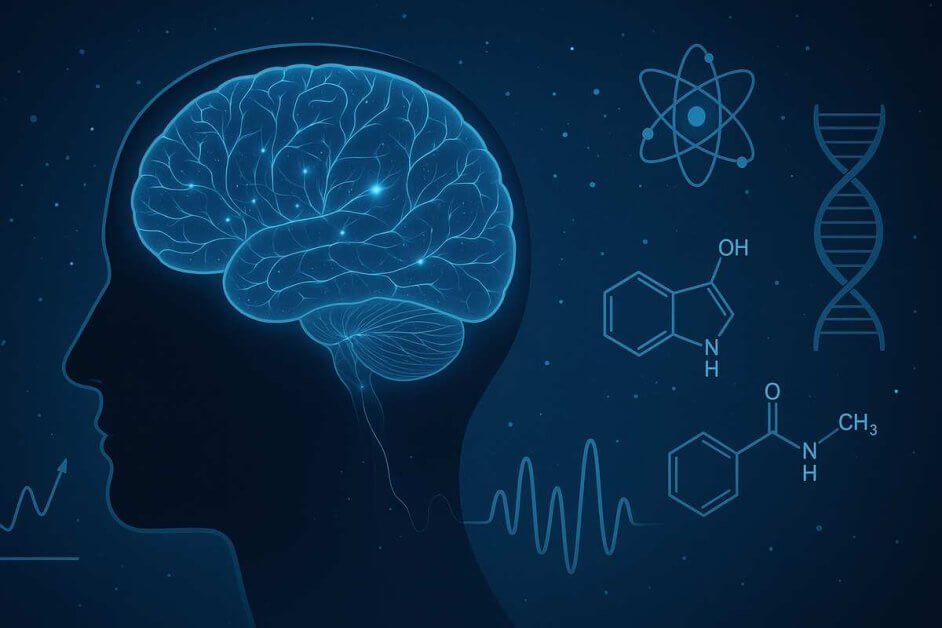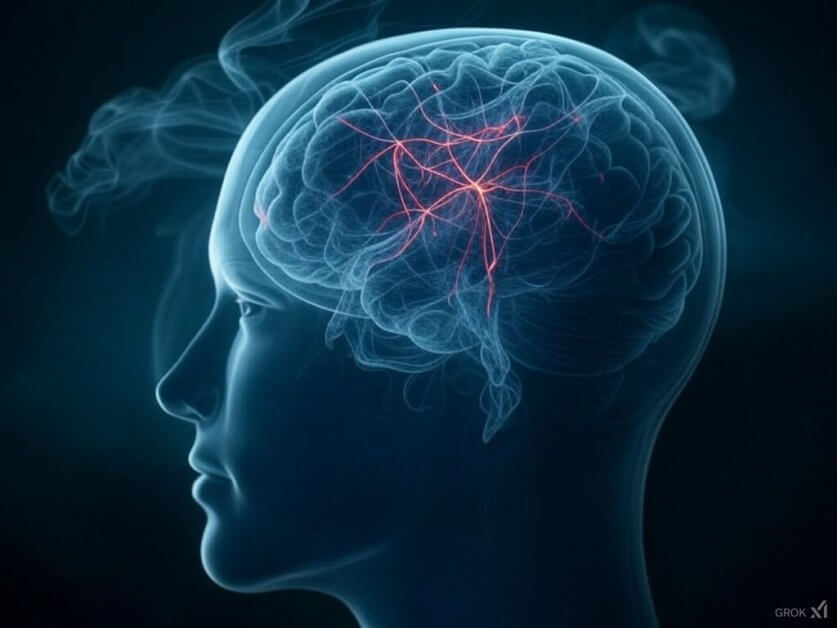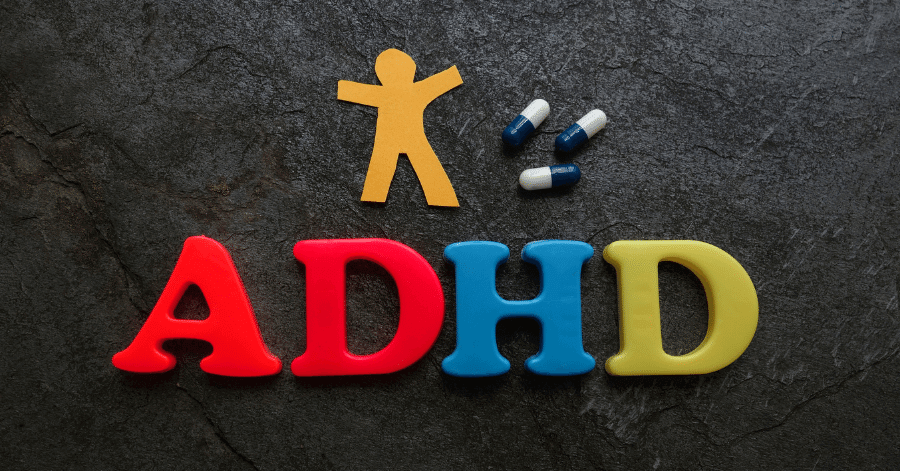
What is Limbic Friction – And How To Overcome It
Discover what is limbic friction — the brain’s tug-of-war between comfort and discipline — and how to turn it into growth.

In the 19th century, American settlers believed they were destined and divinely ordained to expand westward. This idea, called Manifest Destiny, wasn’t just a slogan. It shaped policy, inspired action, and changed the map of the United States.
Whether you see it as bold vision or dangerous hubris, one thing is undeniable: belief alone propelled entire populations to act as though their future was guaranteed.
Fast forward to today, and “manifestation” is trending everywhere. TikTok gurus, self-help coaches, and glossy books tell you to “ask, believe, receive.” Critics dismiss it as new-age nonsense. Followers swear by it as life-changing. But strip away the hype, and a deeper question emerges: is manifestation real?
The answer depends on what you mean. If you’re expecting the universe to act like Amazon Prime, delivering your dreams to your doorstep the next day, you’ll be disappointed.
But if you view manifestation as a psychological and behavioral tool that rewires your brain, shifts your habits, and makes opportunities more visible (as science has shown), then yes, manifestation is very real.

At its core, manifestation is the practice of deliberately focusing your thoughts, emotions, and imagination on a desired outcome with the intention of making it real. It’s about shaping your inner world so your outer world begins to align with it.
That doesn’t mean thoughts alone magically bend reality. But what it does mean is that your mindset influences your behaviors, your behaviors shape your opportunities, and your opportunities determine your outcomes.
We must be clear that manifestation is not mainstream established scientific fact. The version popularized by the New Thought movement and books like “The Secret” promises that thoughts alone can materialize reality — but there’s no hard evidence to support that. You can’t think your way into winning the lottery or growing a new limb.
That doesn’t necessarily mean that results from manifestation are not possible, only that science hasn’t validated it in that form. And it’s important to acknowledge that before we explore where manifestation does show real power.
Where manifestation holds demonstrable weight is in psychology. Positive thinking, visualization, and belief directly affect confidence, motivation, and performance. Athletes, CEOs, and high performers use these tools because they work.
True manifestation isn’t about sitting back and waiting, it’s about developing enough motivation and belief that drive action. More specifically, it’s about aligning your actions with your intentions. Visualization gives you the map, but only your actions can take you down the road.
Manifestation isn’t magic, but it is mental training. It’s the process of teaching your brain to expect success, recognize opportunities, and act in ways that bring your vision closer.

A lot of the confusion around manifestation stems from not understanding where visualization fits into the picture. Visualization is the act of creating vivid mental images of your desired outcome. It’s a specific technique that gives form and clarity to what you want.
Manifestation, on the other hand, is the broader process of bringing those thoughts and intentions into reality. Visualization, as we will see, is part of it, but manifestation also involves emotional states, clear intentions, belief, and aligned action. It’s not just what you see in your mind — it’s what you feel in your body and how you move in your life.
I like to think of it this way: visualization is seeing, but manifestation is feeling. Visualization sketches the image in your mind, while manifestation breathes life into it by weaving together your thoughts, emotions, beliefs, and actions until it becomes a lived reality.

Some people confuse manifestation with the Law of Attraction. The Law of Attraction is often summed up with the phrase “like attracts like” — the idea that if you think good thoughts, you’ll attract good things. The way it’s usually presented, though, makes it sound passive, almost as if the universe is a delivery service that responds to your mental requests.
Manifestation, at least in the way we’re exploring it here, works differently. It’s not about waiting for the universe to drop something in your lap. It’s about an active process where your beliefs shape your behaviors, your behaviors open doors, and your actions ultimately create results.
The two ideas overlap in that they both emphasize focus and belief. The difference is that manifestation works because you change. You’re not just wishing for a new reality — you’re becoming the kind of person who moves toward it.
Sports psychology has studied visualization for decades in the hope of improving athletic performance at the top level to gain even the slightest advantage.
Brain imaging techniques have found that when athletes mentally rehearse movements, the same neural pathways fire as if they were physically practicing. Studies show that combining physical training with visualization improves performance more than training alone.

A 2020 meta-analysis of 37 studies confirmed that mental practice — essentially visualization or mentally rehearsing a skill — does enhance performance across a wide range of tasks, not just in sports.
The effect wasn’t trivial either; participants who practiced visualization performed better than those who didn’t, especially when the mental practice closely matched the real activity. The researchers also noted that while the benefits are clear, they aren’t limitless — duration, vividness of imagery, and pairing with physical practice all matter.
In a 2024 study by Blanco-Ariza et al., young adult football (soccer) players (aged ~19-25) were put through an 8-week plyometric training program combined with visualization tasks, compared against a control group doing the same physical training without visualization.
By the end of the study, the visualization group saw significant improvements in vertical jump height, sprint speed over 50 meters, and most notably, in their competitive self-confidence when measuring how ready and capable they felt in game situations.
Every thought you repeat fires a pattern of neurons in the brain, and as the old neuroscience phrase goes, “neurons that fire together, wire together.” This is the essence of neuroplasticity — your brain’s ability to physically rewire itself in response to experience and focus. When you consistently dwell on failure or doubt, you’re not just entertaining those thoughts — you’re literally strengthening the neural pathways that encode helplessness and avoidance. Over time, those circuits become your brain’s “default setting,” making it easier to slip into defeat and harder to imagine alternatives.
The reverse is equally true. When you focus on success, perseverance, or possibility, you repeatedly activate different networks in the prefrontal cortex and reward circuits linked to motivation. Those connections grow stronger, priming you to take action, persist through challenges, and notice opportunities in your environment. Psychologists call this the self-fulfilling prophecy: what you expect, you unconsciously begin to move toward. Your choices, reactions, even your body language start to align with those expectations.
Your brain doesn’t discriminate between constructive and destructive input. Whatever you feed it most often, it will reinforce. That’s why conscious manifestation — deliberately choosing to visualize empowering futures instead of replaying limiting ones — is so powerful. You’re not just “thinking positively.” You’re training your brain’s wiring to make success the path of least resistance.

Your brain is bombarded with millions of bits of information every second. If you had to consciously process all of it, you’d be paralyzed. That’s where the Reticular Activating System (RAS) comes in — a network in your brainstem that acts as a filter, deciding what information gets your attention and what gets ignored.
Ever bought a new red car and suddenly noticed red cars everywhere? The number of red cars didn’t increase overnight — your RAS simply decided they were now important, so it started letting them through.
This same mechanism applies to manifestation. When you consistently visualize your goals, you’re essentially training your RAS to flag anything related to them. That might be a job posting that perfectly fits your skills, a person who could become a valuable contact, or a chance opportunity you might otherwise walk past.
In other words, visualization doesn’t make opportunities magically appear out of thin air — but it does make you far more likely to notice and act on them when they’re already around you. That’s the real magic of a trained RAS.
When you vividly imagine a future, your brain releases dopamine — the neurotransmitter linked to motivation and reward. This isn’t just about feeling good. Dopamine plays a central role in driving behavior: it fuels anticipation, focus, and the willingness to keep working even when the outcome is far away.
Think of dopamine as your brain’s way of saying, “This matters — keep going.” When you visualize your goals with emotion and clarity, you essentially trick your brain into giving you a taste of that reward now. That little chemical boost doesn’t just lift your mood — it energizes you to take action and persist when things get tough.
This is why manifestation practices like visualization and affirmations can be so powerful. They don’t guarantee the outcome, but they prime your brain with the motivation needed to keep moving toward it. Over time, those repeated dopamine hits create a feedback loop: visualize → feel motivated → take action → reinforce the vision.
Here’s where skeptics roll their eyes: “energy” and “vibrations.”
Yes, in physics, energy means the capacity to do work, and frequency refers to measurable wave cycles. In self-help, people use them metaphorically—your “energy” is your mindset, your “frequency” is your vibe. Strict scientists rightly point out the mismatch.
But here’s the interesting part:
Does that mean thinking happy thoughts changes the universe’s quantum field? Probably not. But it does mean “energy” is a useful metaphor for the way your mindset interacts with your environment. You really can “tune yourself” by staying prepared, open, and receptive. And as the old saying goes, luck is what happens when preparation meets opportunity.
Manifestation works both ways. Focus on success, and you build pathways toward it. Focus on failure, and you wire your brain for helplessness. Psychologists call this learned helplessness—believing you have no control, even when opportunities exist.
In daily life, we all know people who constantly expect the worst. Their “manifestation” is negative, and it becomes self-fulfilling. The takeaway here is that your brain will move in the direction of whatever you focus on—positive or negative.
Manifestation isn’t just a 10-minute ritual you squeeze in each morning. It’s a mindset and a practice you weave into your daily life. The more often you reinforce it, the more natural it becomes. Here’s how to approach it effectively.
Clarity is the starting point. You can’t manifest a vague wish like “I want to be happy” and expect results, because your brain doesn’t know what to do with that. Instead, define what you want in concrete, visual terms — not the steps you’ll take, but the destination itself.
Maybe it’s owning a home with space for a garden, or publishing a book, or hitting a fitness milestone. The key is to be specific enough that you can imagine it vividly, but flexible enough to allow life to surprise you. Sometimes the version you receive is even better than the one you pictured.
Visualization is more than closing your eyes and daydreaming. The real power comes when you involve your senses. Imagine not just the sight of your future, but the sounds, smells, textures, even tastes.
So how do you actually visualize in a way that makes it stick? For me, it’s a simple but powerful routine. I sit down for about ten minutes with calming frequency music playing in the background. I close my eyes, get comfortable, and allow myself to step into the future I want to create. The trick isn’t just to see it — it’s to feel it.
I imagine the details as vividly as possible, engaging all five senses. I picture myself in my dream house, sitting in a rocking chair, feeling the gentle wind in the trees outside. I imagine the sound of leaves rustling, the warmth of the sun through the window, the texture of the chair beneath me. I visualize the feeling of checking my bank account and seeing more than enough money there, along with the sense of security and peace it brings.
I do this every morning for ten minutes, and sometimes throughout the day — especially when stress, fear, or doubt start creeping in. Visualization becomes not only a way to build the future but also a way to calm and refocus in the present. Over time, this practice trains the mind to default back to vision and possibility, rather than worry or limitation.
Affirmations have become a bit of a cliché — writing “I am abundant” in your journal a hundred times won’t automatically make you feel abundant. But words do matter. Repeated often enough, and linked to a vivid vision, they act like mental cues.
At first they may feel hollow, but over time they can spark subtle shifts in belief that give you momentum. The trick is to go beyond mechanical repetition. Speak affirmations while imagining your vision, so the words are backed by feeling. That’s when they stop being empty lines and start becoming anchors.
One of the fastest ways to sabotage manifestation is to get hung up on the “how.” Out of the million possible ways to reach your goal, it’s almost certain you won’t imagine the exact route. If you cling to your own version of the path, you might miss opportunities that don’t fit your script but could still take you where you want to go.
Focus on the destination instead. Let go of control over the route. Think of it as setting a GPS pin: you know where you’re headed, but you let the system reroute you when there’s traffic or roadblocks along the way.
This is where faith comes in — not necessarily religious faith, but trust in something bigger than your conscious mind. Call it the universe, God, probability, or simply your subconscious at work. The point is that you can’t micromanage every detail of your future.
Trust allows you to stay open and receptive, instead of tightening your grip and closing off possibilities. When you learn to trust, you make space for unexpected opportunities to show up.
Visualization without action is just daydreaming. Manifestation only works when your actions are consistent with your intentions. That doesn’t mean giant leaps every day — it often looks like small, steady steps that reinforce your vision.
If you’re manifesting becoming a writer, that might mean writing 500 words a day. If you’re manifesting health, it might mean choosing a walk over the couch. Each action is a signal to your brain that your vision matters, and it compounds over time.
Finally, manifestation isn’t something you do once a day and forget about. It’s a lens through which you can approach your entire day. Whenever doubt, fear, or negative thoughts creep in — as they inevitably do — use them as a cue.
Instead of spiraling, take a moment to visualize your end goal again. Even if it’s only for a few seconds, that repeated redirection builds a habit. Over time, your default response to fear becomes a return to your vision of the future. That’s when manifestation stops being an exercise and starts becoming a way of life.
Affirmations are popular: “I am abundant.” Write it in your journal a thousand times. But if you don’t feel abundant, the words fall flat.
Still, don’t dismiss them. Repetition can spark something unexpected. Sometimes one phrase lands differently, flips a switch, and gives you just enough momentum to take action. The key is to connect words with emotion and vision. That’s when affirmations stop being ink on paper and start becoming fuel.
At the end of the day, does it matter whether manifestation works because of metaphysical energy, neuroscience, or placebo? A mother doesn’t need to understand fertility biology to have a child. You don’t need to master quantum physics to benefit from manifestation.
What matters is this: manifestation works—at least to some degree. It may not make you a billionaire. It won’t rewrite the laws of physics. But it will almost certainly make you better off than if you never practiced it.
Manifestation isn’t about controlling every detail of the path. It’s about holding a vision, aligning your actions, trusting the process, and letting life surprise you.
So don’t wait for the universe to hand you your dream life. Start manifesting it by wiring your brain, training your focus, and living as if your future is already here.
At its core, manifestation is the practice of deliberately focusing your thoughts, emotions, and imagination on a desired outcome with the intention of making it real. It’s about shaping your inner world so your outer world begins to align with it.
That doesn’t mean thoughts alone magically bend reality. But what it does mean is that your mindset influences your behaviors, your behaviors shape your opportunities, and your opportunities determine your outcomes.
The answer depends on what you mean. If you’re expecting the universe to act like Amazon Prime, delivering your dreams to your doorstep the next day, you’ll be disappointed.
But if you view manifestation as a psychological and behavioral tool that rewires your brain, shifts your habits, and makes opportunities more visible (as science has shown), then yes, manifestation is very real.
True manifestation isn’t about sitting back and waiting, it’s about developing enough motivation and belief that drive action. More specifically, it’s about aligning your actions with your intentions. Visualization gives you the map, but only your actions can take you down the road.
Manifestation isn’t magic, but it is mental training. It’s the process of teaching your brain to expect success, recognize opportunities, and act in ways that bring your vision closer.

Discover what is limbic friction — the brain’s tug-of-war between comfort and discipline — and how to turn it into growth.

Common symptoms of ADHD can vary tremendously, but often include an inability to focus, irritability, and a poor memory.

Humans are wired to focus on negative stimuli. Learn the science of positive psychology and how to improve all aspects of your mentality.

From natural herbs to synthetic compounds, nootropics are designed to enhance mental performance. Here’s what science really says.

Discover The Impact of Cannabis Use on Brain Function and Cognitive Performance, exploring how heavy and moderate cannabis use affects memory, brain activation, and cognitive abilities.

ADHD can be managed with the right tools. Explore 5 treatments that actually work — from therapy to lifestyle strategies.
You’ll Learn:
Effective Immediately: 5 Powerful Changes Now, To Improve Your Life Tomorrow.
Click the purple button and we’ll email you your free copy.